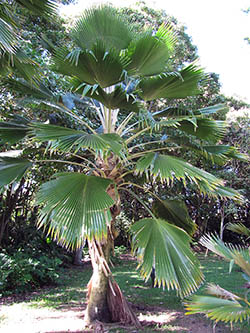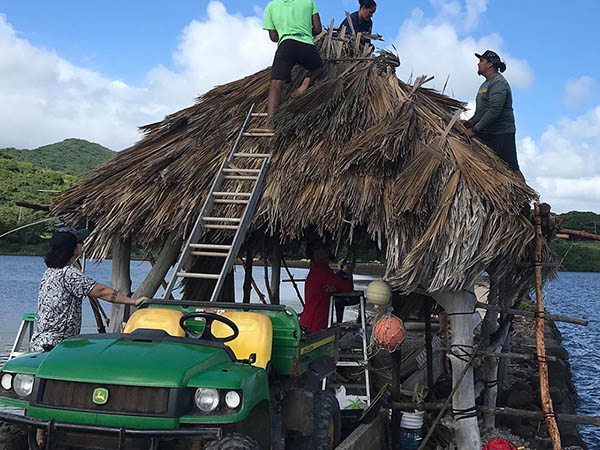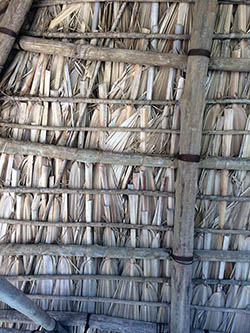 |
 |
 |
|||||
|
Rebuilding the Hale:
“There’s a 1910 photograph taken by Baker,” Hi‘ilei says. “It’s an aerial shot of the pond and it shows that at each of our mākāhā there was a hale, and we called them hale kai‘i, or guard houses. For us, a lot of what we would like the fishpond to look like comes from that photograph. You look at it, there’s the fishpond wall, beautiful hale kia‘i and all the mākāhā. No trees growing on the wall. We need to mimic that. That photo is like the visual of where we’d like to be. And so our restoration process is, we restore the mākāhā and then we install or reinstall a hale kai‘i. That, in a way, activates that particular mākāhā. This was the first hale we built in 2010. And then the next hale we built were those two kind of simultaneously—the third one and the fourth one. “They were started through a workshop that we did, I believe in 2012. Our process: restore the wall, restore the mākāhā, install the hale kai‘i. Really, the hale, all it is intended to provide shelter from the elements, whether it be wind, rain, sun. I guess traditionally it provided a place for the caretaker of the fishpond to store his equipment—the harvesting equipment—but it’s been fun for us to design them differently. “Peleke, who’s our restoration coordinator, is a student of Francis Sinenci, who is a master hale builder and has been teaching a lot of folks throughout Hawai‘i. He has an apprenticeship program to teach and then graduate those individuals to be able to teach on their own. And so fortunately Peleke had already been a student of Uncle Francis and took advantage of that. Uncle Francis came down, and Peleke, and as a result of that, a lot of our employees have become proficient in building hale. “It helps that we have a mangrove forest to use as a resource and that’s always been something that we’ve been conscious of and committed to our practice of restoration here. While we recognize mangrove as an invasive species here in Hawai‘i, we know that elsewhere in the world it’s highly prized and it has its place in ecosystems that it’s native too. You look at the native peoples of those areas and they’re using mangrove for hale, house timber, fire wood. A lot of mangrove species are used for medicine and food. So for us, we recognize that it’s a resource. Rather than just be wasteful about it, we repurpose that invasive species into something good. 
“And so we build our hale here with mangroves. We also are able to share that mangrove wood—because we have so much of it—with many others on O‘ahu at least. I can name at least five or six different hale that have been built using mangrove that comes from the fishpond, so it’s beneficial to them too. “And then the thatch material, traditionally it’s called loulu because that’s our native fan palm. There’s a lot of different species that are native to Hawai‘i and they’re all referred to as loulu. Our first hale makes use of some native loulu. All other hale have been thatched using the introduced fan palm, primarily the Fijian fan palm. And the reason for that is it’s heavily used in landscaping. "When you leave the fishpond and you drive on the highway, what you see is the Fijian fan palm. But when I talk about it, I try to refer to it as ‘Fijian fan palm’ because I don’t want to do our native loulu an injustice by calling the Fijian fan palm, loulu.” |
|
|||||
|
|||||


